My father, grandfather and two uncles died of heart attacks before they were forty. Now, at age 38, I am battling the deadly genetic curse that has already given me FOUR heart attacks
Heart disease has intersected Brandon Wilson’s life.
He was just seven years old when his father, 39, was killed by a fatal heart attack – which was later found to have been caused by an undiagnosed genetic condition.
His grandfather and two uncles died before the age of 40 from heart complications caused by the condition that claimed his half-brother at age 48.
The condition causes the arteries to become clogged with the dangerous type of cholesterol.
Now 38 and having survived four major heart attacks, Wilson has vowed to break the cycle and watch his four-year-old daughter and five-year-old son grow up.
Brandon Wilson, 38, lost four family members to heart disease, many of whom were under the age of 35. He feared for a long time that he would not reach 40 either.
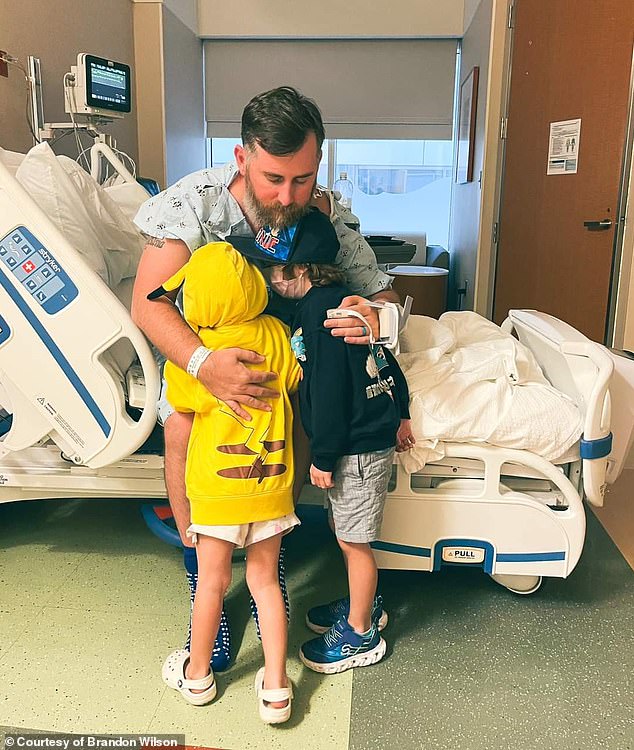
Mr. Wilson has familial hypercholesterolemia, a genetic condition that leads to high LDL (bad) cholesterol. This significantly increases the risk of cardiovascular disease
For most of his life, Wilson has feared it could kill him at any time, especially as he approaches his 39th birthday.
‘That’s how I saw it. I wouldn’t live past 40. I’m just going to live with the Wilson family curse and die young. And that would be it,” he told DailyMail.com.
‘There are a lot of concerns around that. I want to live in a bubble for a year. Getting to 40 is such an achievement for me, for a Wilson guy.
After his father’s death, Mr. Wilson’s mother had him and his siblings undergo blood tests.
But it wasn’t until years later that he was diagnosed with familial hypercholesterolemia, a genetic condition that occurs everywhere one in 250 Americans does leads to dangerously high LDL cholesterol (bad cholesterol).
This is a major risk factor for heart disease, which kills nearly 18 million adults in the world every year.
Cholesterol is a fatty substance that can build up in the arteries that supply our organs with oxygen-rich blood.
This causes problems with blood flow throughout the body, making the heart work harder and making it more likely to weaken, leading to heart attack and heart disease.
Meanwhile, the brain may become deprived of oxygen, increasing the risk of stroke.
“I was diagnosed with, ‘It runs in the family,’” he said. “But it took about twenty years before I got a real diagnosis.”
‘In my early twenties I had chest pains and went to the emergency room. No one would take me seriously. ‘You’re a young guy. There’s nothing wrong with you.’
However, at the age of 29, he suffered a heart attack as a widow. This happens when you have a blockage in the left anterior descending (LAD) artery, the largest in the heart.
The LAD supplies about half of the heart’s blood supply.
This was the first of Wilson’s four heart attacks. For years, doctors dismissed him and recommended a course of statins, which are intended to lower cholesterol.
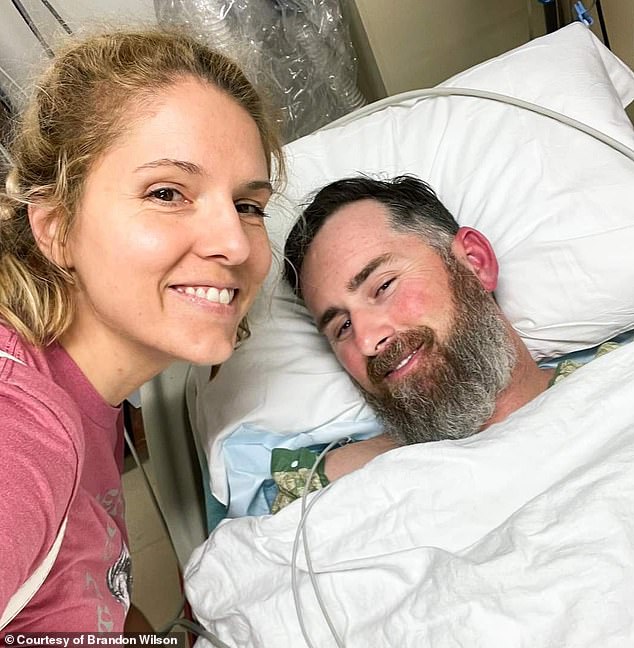
Mr Wilson has had four heart attacks, seven coronary stents and a stroke as a result of his condition. “The year I first met the Mayo team, my wife was planning to become a widow,” he said. ‘We weren’t sure if I would make it to the New Year’
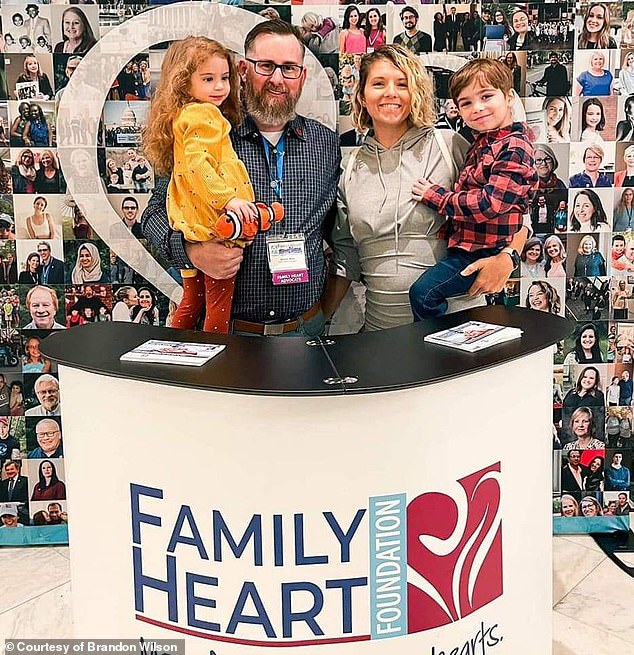
Two of Wilson’s young children inherited genetic markers for high cholesterol. He said he’s on a mission to make sure heart disease ‘ends’ him
At age 35, one of his major heart attacks left him needing quadruple bypass surgery. This procedure, also called coronary artery bypass surgery, aims to create a new path for blood to flow around a blocked artery.
This involves taking a healthy blood vessel from the chest or leg and connecting it under the blocked artery to improve blood flow to the heart muscle.
Despite the operation, he suffered another heart attack a year later.
The level that constitutes high cholesterol depends on whether you have additional risk factors for heart disease, such as high blood pressure, smoking, diabetes, or obesity.
For people without other risk factors, an LDL of at least 190 mg/dl is considered high. With one risk factor this drops to 160 mg/dl. If you have two or more risk factors, 130 mg/dl is high.
In children, an LDL of 130 mg/dl is considered high.
Mr. Wilson was eventually led to the Family Heart Foundation, a nonprofit organization that works with patients with familial hypercholesterolemia.
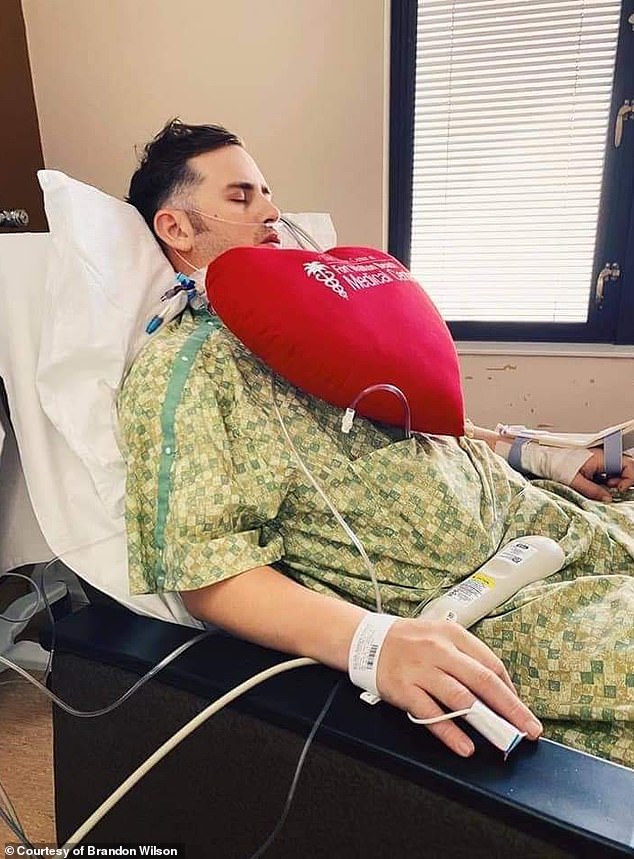
“There are nights when I’m afraid to go to sleep because I don’t know if I’m going to wake up,” Wilson said. ‘The fear is terrible’
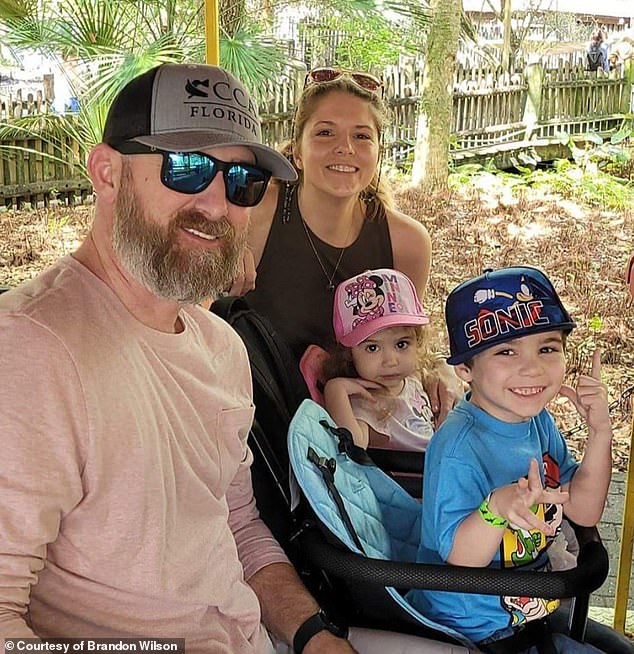
“I may have given them high cholesterol, but I didn’t give them heart disease,” Wilson said of his children. “Heart disease has taken so much of my family. I refuse to let my children take it.”
This causes the heart to work harder, making it more likely to weaken, leading to heart attack and heart disease. The brain, meanwhile, becomes deprived of oxygen, increasing the risk of stroke.
Greasy foods, smoking, drinking and lack of exercise can all increase LDL cholesterol, although some people with a family history may be genetically predisposed to it.
The level that constitutes high cholesterol depends on whether you have additional risk factors for heart disease, such as high blood pressure, smoking, diabetes, or obesity.
For people without other risk factors, an LDL of at least 190 mg/dl is considered high. With one risk factor this drops to 160 mg/dl. If you have two or more risk factors, 130 mg/dl is high.
In children, an LDL of 130 mg/dl is considered high.
According to the Centers for Disease Control and Prevention (CDC), familial hypercholesterolemia affects approximately one in 250 Americans.
Mr. Wilson also has a mutation in his LPA gene, which regulates LDL cholesterol.
Shortly afterward, he began treatment at the Mayo Clinic in Florida.
“I probably wouldn’t be there unless I found the Family Heart Foundation,” he said. ‘And the year I first met the Mayo team, my wife was planning to become a widow.
“We weren’t sure if I would make it to the New Year.”
As well as the heart attacks, Mr Wilson has had seven coronary stents fitted and a transient ischemic attack, also known as a mini-stroke, which occurs when blood flow to the brain is briefly interrupted.
He also struggles with peripheral artery disease (PAD), which narrows blood vessels and reduces blood flow to the arms and legs. This can lead to severe pain, as well as numbness and weakness.
‘There are times when I can only walk maybe 50 yards until my leg starts to burn and I’m out of breath. I used to be very active. I used to play softball with my child, but now it’s a bit more difficult.’
“I am a young man in an old man’s body.”
‘It’s been difficult. I struggle with PTSD, anxiety. I suffer from chronic angina pectoris, chest pain. There are nights when I’m afraid to go to sleep because I don’t know if I’ll wake up.’
“The fear is terrible.”
Mr Wilson is now working with a team of cardiologists, neurologists and vascular surgeons to manage his condition.
This includes frequent trips to the catheterization lab, also known as the cath lab, where doctors work to open his blocked arteries and improve blood flow.
“I call my cardiologist my hero,” he said. “They gave me the right medications, as well as the right treatments.
“When I go to them, I have confidence that they will do everything they can to help me.”
“I have to take about fourteen pills a day, but I don’t mind taking them because they do their job.”
However, Wilson’s four-year-old daughter inherited familial hypercholesterolemia, while his five-year-old son was diagnosed with the same lipoprotein (a) genetic marker.
Mr. Wilson is now focusing on advocacy work and instilling healthy habits in his children so that they do not develop heart problems later in life.
Ultimately, his goal is to break his family’s generational curse.
“I may have given them high cholesterol, but I didn’t give them heart disease.” They will never have to know a life full of heart attacks and all the different things that I’ve had to go through and struggle with,” he said.
“Heart disease has taken so much of my family. I refuse to let them take my children.”
